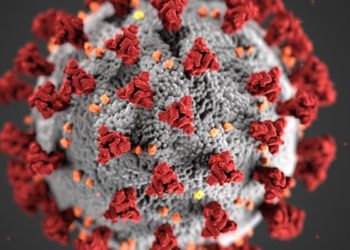Adolescents seeking weight loss treatment at higher risk for weight-based bullying
Image: PD
Key study points:
1. Among adolescents seeking weight loss treatment, weight-based victimization (WBV) was most commonly perpetrated by peers in a verbal form (75%–88%).
2. A large portion of the youth surveyed reported WBV by parents and teachers, including coaches.
3. Regardless of current BMI, individuals who were previously overweight are still at risk of WBV.
Primer: Being overweight is one of the greatest risk factors for peer- and family-perpetuated bullying among school-aged youth. Concerning to both the students experiencing the bullying and their educators, early WBV increases psychological distress and depressive symptoms, prolonged bullying, and negative weight-related health outcomes among those who experience this form of harassment. For instance, WBV is associated with increased caloric consumption and sedentary behaviors. With a high prevalence of obesity among the pediatric population, greater understanding of weight-based bullying is essential to ensure that family, teachers, and peers can act as effective supports when needed.
Background reading:
1. Strategies to address weight-based victimization: Youths’ preferred support interventions from classmates, teachers, and parents [Journal of Youth and Adolescence]
2. Weight status as a predictor of being bullied in third through sixth grades [Pediatrics]
3. Obesity and bullying: Different effects for boys and girls [Archives of Disease in Childhood]
4. Weight-related teasing in a racially diverse sample of sixth-grade children [Journal of the Academy of Nutrition and Dietetics]
This [cross-sectional survey] study explored how WBV affects youth seeking treatment for weight loss. Online self-report surveys were completed by 361 adolescents between the ages of 14- and 18-years-old who were attending weight loss camps. Participants reported occurrence, settings, and frequency of weight-based bullying.
64% of participants reported WBV, with most lasting >1 year. Many experienced WBV by peers (>90%), friends (70%), unknown individuals (55%), coaches, parents, and teachers. Verbal bullying was the most common form of WBV in the school setting; more than 50% also encountered bullying online. Physical bullying was the least common.
Though the risk of being bullied increased with BMI, even those with a healthy BMI who were previously overweight reported victimization (34% of camp attendees were in this category, participating to maintain weight loss). Adolescents whose parents were overweight or who got worse grades were at a significantly higher risk for WBV.
In sum: Individuals seeking treatment for weight loss or weight maintenance are often targets of WBV, particularly from peers, unknown individuals, friends, dating partners, and adults in their lives. Individuals participating in the study who were currently in the normal BMI range still reported WBV; regardless of current weight, individuals who were once overweight may continue to experience harassment. In addition, while verbal WBV was the most common form of teasing, cyber bullying was also prevalent.
While this study did not assess methods for preventing WBV, it highlights the need to address WBV coming from multiple sources and in different forms. As parents and educators are viewed as supports for these adolescents, but may actually be perpetrating WBV, instruction on effective ways to help youth cope with weight management and weight-based harassment will likely be essential in combating its negative psychological and physical consequences.
Click to read the study in Pediatrics
By [LHC] and [DB]
More from this author: Enclosed tobacco displays appear to dissuade teens from purchasing tobacco products;New AAP policy statement endorses use of emergency contraception for adolescents; Increased autism diagnoses observed in pregnant women with viral influenza, fever or using antibiotics; Prophylactic probiotic use trends toward decreased incidence of nosocomial infections in preterm infants
© 2012 2minutemedicine.com. All rights reserved. No works may be reproduced without written consent from 2minutemedicine.com. Disclaimer: We present factual information directly from peer reviewed medical journals. No post should be construed as medical advice and is not intended as such by the authors or by 2minutemedicine.com. PLEASE SEE A HEALTHCARE PROVIDER IN YOUR AREA IF YOU SEEK MEDICAL ADVICE OF ANY SORT.






